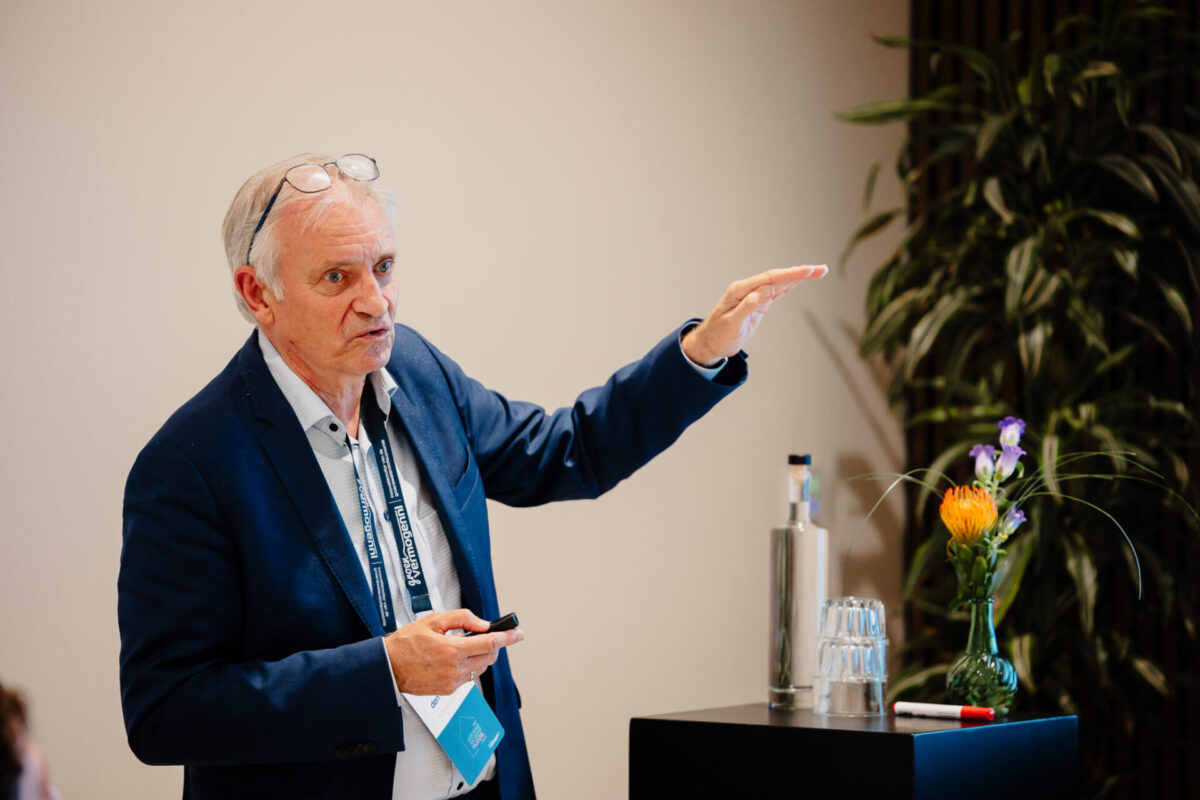‘The progress of the hydrogen transition is powered by market forces’ interview with Bert den Ouden, Project Director HyXchange
‘The progress of the hydrogen transition is powered by market forces’
1. What motivates you?
“Green energy! That’s the overarching theme that defines my career path. The path to a sustainable future hinges on the energy transition. This needs to happen quickly and efficiently, while keeping costs in check. Even though the environment and the market are often seen as being at odds, I firmly believe that market forces actually power the progress of the energy transition. The HyXchange hydrogen exchange is a perfect illustration of this.”
2. What is HyXchange?
“Hydrogen has been used by Dutch industry for many years. But that was grey hydrogen. It needs to become green or, at the very least, blue and climate-neutral. However, this is complicated by the fact that most industrial processes need a constant energy supply. Yet the sun doesn’t always shine and the wind doesn’t always blow. While green hydrogen can be stored in salt caverns, storage capacity may initially be restricted, and it may not yet be accessible from all parts of the Netherlands. As a result, there is a mismatch between supply and demand. Fortunately, however, there are other ways to achieve flexibility. The HyXchange trading platform offers open access to all, enabling parties to trade in hydrogen and maintain their balance.”
3. What makes that platform so important?
“In the HyXchange project we specify the products and conditions required for hydrogen trading. This involves aspects such as hydrogen certification, a price transparency index, a spot market, and the development of trading instruments to balance the physical hydrogen network and store hydrogen. We incentivise trading in hydrogen as well as its use, by providing greater market transparency.”
4. What aspects of the hydrogen market particularly capture your interest?
“When the energy market was deregulated 25 years ago, I took a leap of faith and agreed to an audacious venture: founding a Dutch electricity exchange. I really enjoyed the thrill of pioneering. So, when I was invited to set up a hydrogen market, I of course said ‘yes’. Your first thought might be that all exchanges are essentially the same, whether they deal in electricity, gas, or hydrogen. However, hydrogen is in a league of its own. It’s still very new, with no network, transport, or fully formed regulatory framework. The only familiar faces are the parties involved: the electricity companies, the chemical industry, and sustainable entrepreneurs. Back then, the pioneering spirit was centred on the exchange, whereas today it is focused more on green hydrogen and its development.”

6. Where do things stand with the regulatory framework for green hydrogen?
“A Europe-wide certification scheme will be put in place to guarantee the hydrogen’s green status. A sound principle: a single unified system for trade and imports throughout Europe. While that’s certainly a commendable goal, it’s fraught with complexity from the very beginning. For instance, this hydrogen must be produced using green electricity during periods of availability, generated near the power source, but without drawing on green electricity from long-established projects. On the one hand, it makes sense, but on the other, the regulations for hydrogen are far stricter than those currently applied to green electricity and biogas. A mechanism to physically track certified hydrogen with precision must also be put in place. This is particularly challenging for hydrogen, as its transport infrastructure has yet to be developed. Green hydrogen is still in its early stages and has yet to reach its full potential. This has prompted Brussels to pursue tighter oversight, resulting in a cascade of new regulations. That administrative red tape only adds to the risks for green hydrogen projects, and unnecessarily inflates their costs. In that way, we risk missing opportunities and extending our reliance on natural gas.”
7. Is there a better way to handle this?
“A more prudent approach would be to introduce those strict European regulations gradually, allowing the emerging hydrogen market time to mature further. Various parties and administrators have spoken out in favour of this. For now, we can use the established guarantee-of-origin system that is already in place. For instance, the certificate bears a unique identification number, as well as details of the type of energy and the form of state subsidy involved. This enables energy suppliers to demonstrate that their energy is derived from renewable energy sources. Early on, the system experienced some issues, but a few easy-to-follow rules can prevent these from recurring. The United States and Japan, among others, have opted for a more straightforward approach and are now pulling ahead of us. This is a worrying trend. After all, Europe’s objective is to produce 20 million tons of green hydrogen domestically and import an additional 10 million tons by 2030. Legislation needs to facilitate progress rather than frustrate it, particularly when it comes to a young, fast-developing commodity such as green hydrogen. To end on a brighter note, we are definitely gaining ground in the market. For instance, we already have a price index in place, and we’re working to develop it further. And along the way, we are producing useful commercial products. Within a few years, a nationwide market will emerge, featuring spot and balancing markets. And, looking further ahead, a price indication for long-term supply contracts will be established.”
Bert’s career in the energy sector
- A leading figure in Berenschot’s energy transition work and Project Director at HyXchange
- Director of the APX-ENDEX energy exchange and APX Group
- Energy policy adviser at the Ministry of Economic Affairs
- Energy and environmental consultant at CE Delft
- Experimental physics at Leiden University
The HyXchange hydrogen exchange project, initiated by Gasunie and the Port of Rotterdam Authority, Port of Amsterdam, Groningen Seaports and North Sea Port, receives occasional funding from GroenvermogenNL.




